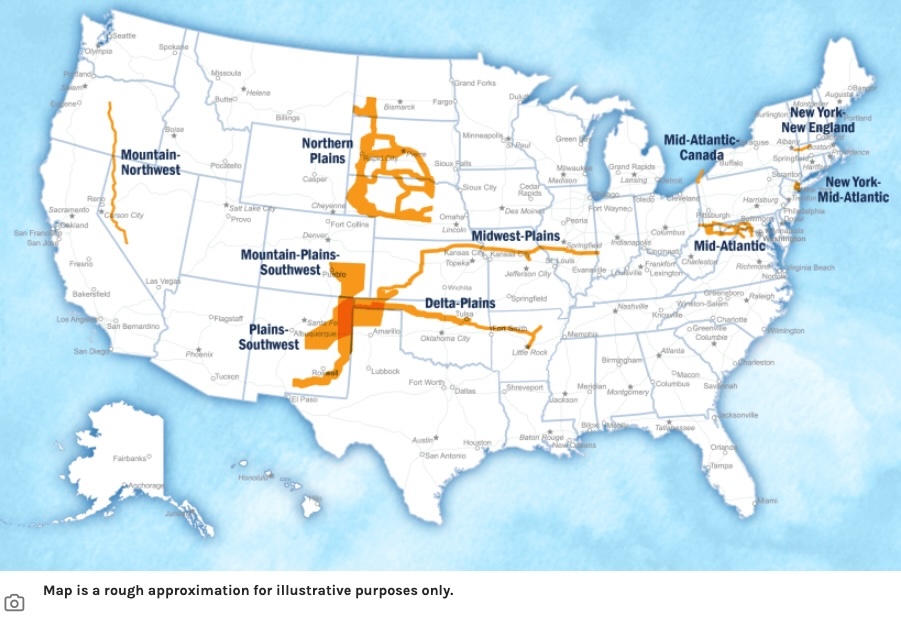The Department of Energy (DOE) announced 10 potential corridors for new high-voltage transmission lines on May 8, designed to bring renewable energy from areas where it’s generated to centers of demand and to provide stability to local grids.
The locations of the proposed lines were chosen to help update the grid for the energy transition by mitigating the risk of supply interruptions from intermittent wind and solar power.

![]()
![]()
![]()
![]()
![]()
![]()
![]()
![]()
![]()
“At more than a century old, our power grid is showing its age,” said Secretary of Energy Jennifer Granholm in a statement released by DOE.
Granholm has the authority to designate each corridor as a National Interest Electric Transmission Corridor (NIETC) under the amended Federal Power Act, in the 2021 Bipartisan Infrastructure Law. That authority was first established under the 2005 Energy Policy Act.
If the lines get built, they’ll give business leaders and sustainability professionals seeking to decarbonize their electricity greater grid reliability and more choice, by bringing renewable energy generated in remote areas to where companies need it. They should also boost wind and solar projects that have stalled due to the lack of firm purchase agreements.
In theory, this will start a domino effect, lowering the barriers to entry for adjacent infrastructure, such as grid-scale battery storage.
Potential barriers
Designation as a “national interest” project unlocks federal siting and permitting authority from the Federal Energy Regulatory Commission (FERC) in certain circumstances, and the 2021 infrastructure law addresses and limits states’ ability to block such grid upgrades. Several ambitious transmission projects have stalled or collapsed in recent years due to pushback from landowners and local governments, and it’s likely that the new corridors will face legal challenges.
Already, 23 states have sued the federal government over new regulations from the EPA that would enforce limitations on carbon emissions, beginning in 2032.
To overcome such opposition, FERC is currently finalizing new backstop siting rules to be used should a state regulator deny or fail to act on a construction permit application within one year. FERC’s new rules are expected to be announced on May 13.
Moving forward with grid modernization
The announcement of the 10 proposed corridors opens a 45-day window for public commentary. Utilities, project developers and other stakeholders can submit remarks regarding the potential impact and risks of the preliminary list.
In addition to the new corridors, the DOE also released the minimum eligibility criteria to participate in the Transmission Facility Financing (TFF) program and made available funds from the public-private partnerships proposals in the Transmission Facilitation Program (TFP).
The transmission financing program provides up to $2 billion from the Inflation Reduction Act in direct loans to cover the credit subsidy cost — i.e., the costs of loans provided for NIETC projects.
- SEO Powered Content & PR Distribution. Get Amplified Today.
- PlatoData.Network Vertical Generative Ai. Empower Yourself. Access Here.
- PlatoAiStream. Web3 Intelligence. Knowledge Amplified. Access Here.
- PlatoESG. Carbon, CleanTech, Energy, Environment, Solar, Waste Management. Access Here.
- PlatoHealth. Biotech and Clinical Trials Intelligence. Access Here.
- Source: https://www.greenbiz.com/article/doe-unveils-45-billion-future-transmission-projects



